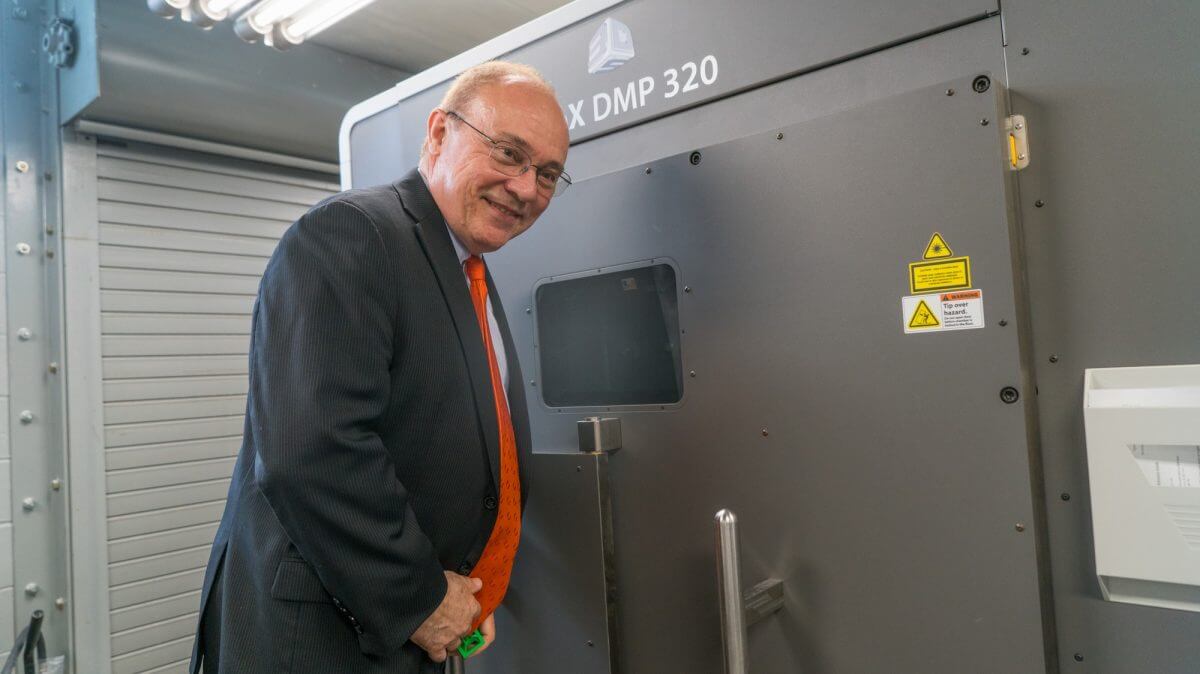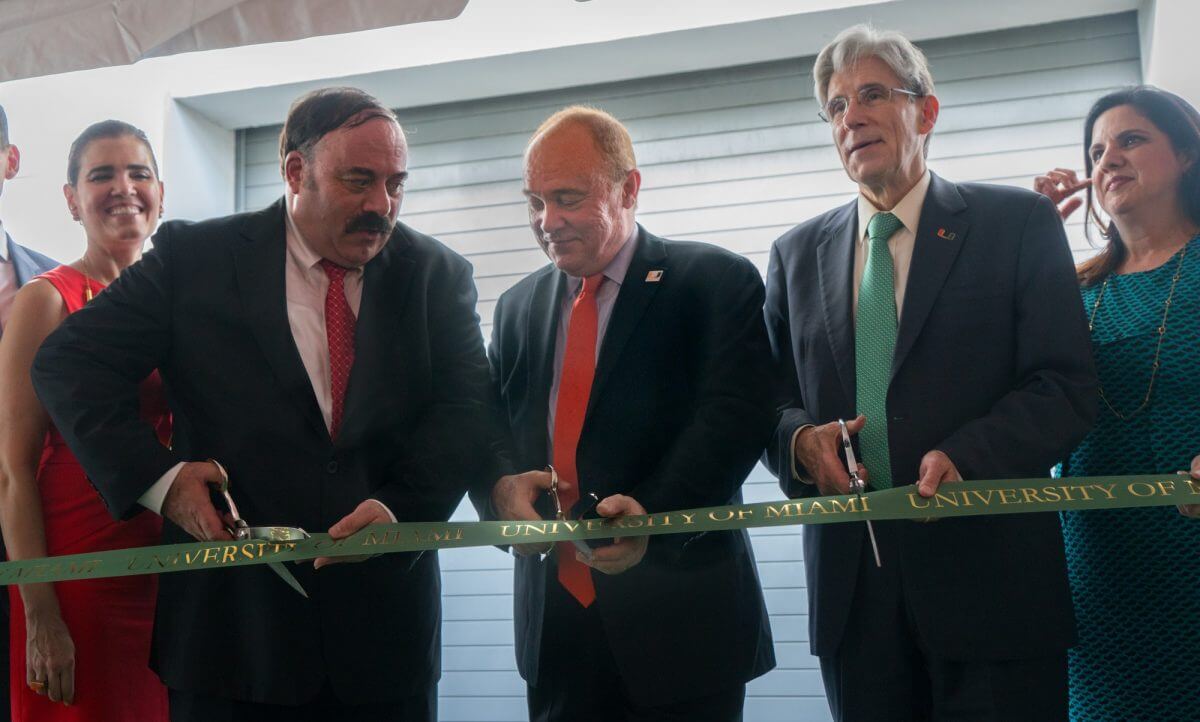The University of Miami’s College of Engineering cuts the ribbon on the new 5,850-square-foot Johnson & Johnson 3D Printing Center.
Over the past few years, 3D printing has played an increasingly innovative role in the production of medical devices, pharmaceuticals, and even consumer goods. So, it’s no surprise that Johnson & Johnson, a leading manufacturer in all three of the aforementioned sectors, has adapted the technology into its business model.
Earlier this year, we learned that Johnson & Johnson used 3D printing to manufacture things like custom surgical tools and pills with sensors. Now, thanks to the University of Miami’s College of Engineering, the medical titan will position itself even further within the additive manufacturing world.
The prestigious South Florida-based university has just opened a Johnson & Johnson 3D Printing Center in Coral Gables. The facility, which will be occupied by both students and J&J scientists, will be used for joint research, materials development, and the testing of various 3D printing technologies.

Johnson & Johnson 3D Printing Center Opened By University of Miami
The massive 5,850-square-foot 3D Printing Center will include 10 MakerBot 3D printers and two metal 3D printing systems, one to produce parts with titanium powder and the other with stainless steel. It also features a special furnace that is used to strengthen materials by changing their microstructure, as well as other instruments that measure the chemical composition of powders.
The university faculty is calling the new facility a “collaboratory” effort between the University of Miami and Johnson & Johnson. The aim of the project is to improve and disrupt the way that engineering is taught in the classroom.
“An engineering education has to give students the chance for hands-on creativity and allow their imaginations to soar. Thanks to Johnson & Johnson, we have yet another resource to educate tomorrow’s technology leaders,” said Jean-Pierre Bardet, dean of University of Miami’s College of Engineering.
The J&J 3D Printing Center is already being used by researchers and students grasping for a deeper understanding of additive manufacturing. For instance, an aerospace engineering major named German Acosta Quiros is working with polymers and adhesives to reduce the time it takes to produce catheters. With an abundance of experience in the medical devices field, having the support of Johnson & Johnson scientists will certainly help with these academic endeavors.
The facility held its grand opening last week, and people have already started touring the 3D Printing Center. All in all, the joint effort between the University of Miami and Johnson & Johnson should benefit both parties, as well as the industry as a whole. When you combine one of the brightest colleges with a leading global manufacturer, innovation is bound to bloom.

License: The text of "Johnson & Johnson 3D Printing Center Opens at University of Miami" by All3DP is licensed under a Creative Commons Attribution 4.0 International License.